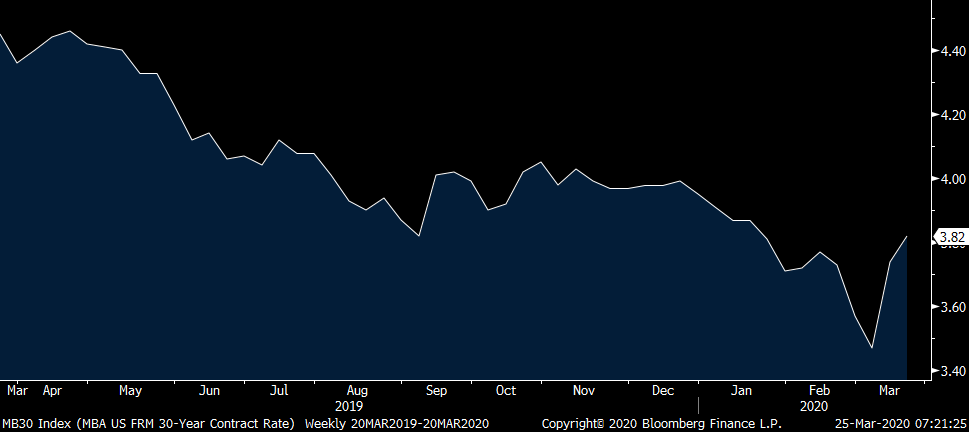Peter Boockvar is the CIO of Bleakley Advisory Group and Editor of The Boock Report.
~~~
Before I get into the details of the bill, I just needed to sing this out loud because I’m so damn curious as to what Warren Buffett is thinking and doing with all that cash he’s sitting on. “Where have you gone Warren Buffett? Our nation turns its lonely eyes to you. Woo, Woo, Woo. What’s that you say, Mrs. Robinson? Walloping Warren has left and gone away.”
So this is what is in the Senate bill to be voted on today of note, generally speaking:
1) Checks to individuals making $75,000 or less of up to $1200 ($2400 for couples making up to $150,000) and $500 per kid;
2) $500 billion is being allocated to “liquidity assistance” for those industries under duress with about $60b going to airlines, both passenger and cargo. I believe some of this will be in the form of loans and the rest in grants;
3) There will be $350 billion given in loans to small businesses for those that keep their employees. Maybe some of this ends up being grants instead. I’m not sure what’s defined as a small business in terms of number of employees and/or revenue;
4) $130 billion will go to hospitals with some more going to drug development and for masks and gloves;
5) For expanded unemployment insurance that will cost $250 billion;
6) About $150 billion will go to state and local governments;
7) And money will go to federal agencies.
The next question is how will the bureaucracy of Washington, DC administer this and make sure it really does get into the hands of those most in need of it. Either way, this is all about buying time for both households and businesses. Time to get millions of more test kits, time for more people to stay home, time for our hospital systems to get the ventilators, masks, gowns and any other supplies needed, time for warmer weather to come, time for effective therapeutics to be proven workable and time closer (although a ways to go) to an inevitable vaccine.
Let’s follow this up with getting rid of the tariffs on $365 billion of imported China goods that US companies are paying for.
As to be fully expected and needed from a contrarian standpoint, the Investors Intelligence said the number of Bears jumped to 41.7% on the week from 32.7% last week and vs 22.9% in the week prior. That is the highest level of Bears since October 2011, a few months after S&P downgraded the US credit rating and QE2 ended. They now far exceed Bulls which fell to 30.1% from 34.6% last week and vs 36.2% the week before that. The Bull/Bear spread of -11.6 is the first negative spread since January 2nd 2019 and the biggest since February 2016, right after the Fed started raising rates. I leave the bottom line to II, “From a contrarian viewpoint, that is the action we want to see.” Keep in mind though again, this matters for the short term only where just maybe A bottom is in, for now.
The mortgage market is upside down (thanks to my friend Barry Habib for explaining to me yesterday) thanks in part to the Fed’s massive buying of MBS (unintended consequence) where lenders are getting thrown upside down on their hedges that they put in place to allow buyers to lock in rates. This on top of servicers that are getting stuck coming up with capital along with worries about job losses and fears that payments won’t get made, further clouded by all the margin calls going on in MBS and lender warehouse lines getting cut. The end result is a rise in mortgage rates to the highest level since middle of January at 3.82% when the 10 yr Treasury yield was around 1.80%. The result was a 34% drop w/o/w in refi’s after a 10% drop in the week prior. They still though are up 195% y/o/y. Purchases fell almost 15% w/o/w and are now down 11.2% y/o/y as many buyers obviously now worry about jobs and open houses become virtual.
Average 30 yr mortgage rate

The only March data point of note overseas was the UK retail sales survey from CBI which fell to -3 from +1 and better than the estimate of -15. The internals though were very mixed as “Grocers reported exceptionally strong growth in sales volumes in the year to March, as did specialist food and drink firms. However, most other sectors reported sharp falls in sales volumes, including clothing, furniture and ‘other normal goods’ (such as flowers, jewelery, cards, etc…). Not really captured in this data point is the news from just a few days ago that the entire country is basically in lockdown for non essential stuff.
The Boock Report is a subscription only service. This is a small sample of the daily output. Learn more here.
~~~
Peter Boockvar, Chief Investment Officer
Bleakley Advisory Group
Editor of The Boock Report.

